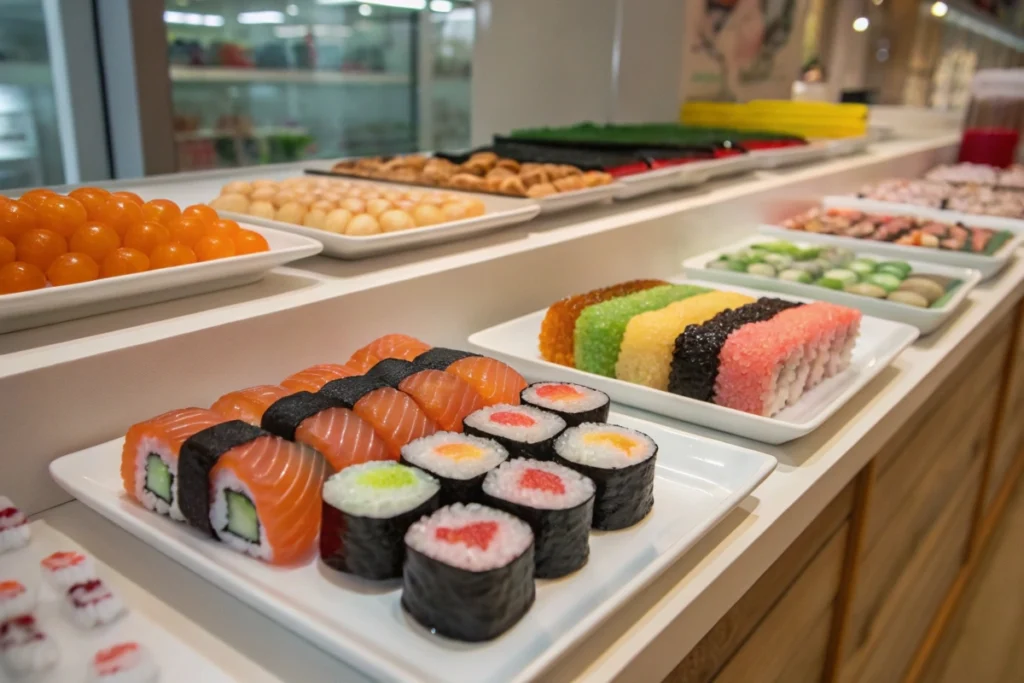Fake food kits from Japan have become a global phenomenon, offering a playful blend of ebay japanese fake food kits that range from candy-making sets to ultra-realistic plastic replicas. Whether you’re fascinated by the artistry of hyper-realistic sushi displays or crave the novelty of Popin’ Cookin’–style candy crafts, these kits on eBay cater to curious hobbyists and collectors alike. Their popularity stems from Japan’s longstanding tradition of perfecting plastic food samples (called sampuru) for restaurant displays, and the modern twist of turning such novelties into a hands-on activity.
In this 3,000-word guide, we’ll dive deep into how to find these kits on eBay, explore various types (from sweet “cookable” candy sets to museum-worthy replicas), and offer tips on how to elevate your projects at home. By the end, you’ll know exactly which items best suit your style—whether you want to decorate your kitchen shelves, entertain kids with DIY candy, or simply marvel at miniature versions of ramen bowls.
For a broader look at other unique Japanese culinary curiosities, see fake-food-japanese-kits for additional inspiration. Let’s begin by defining what exactly these eBay Japanese fake food kits entail—and why they’re capturing the imaginations of creative individuals around the world.
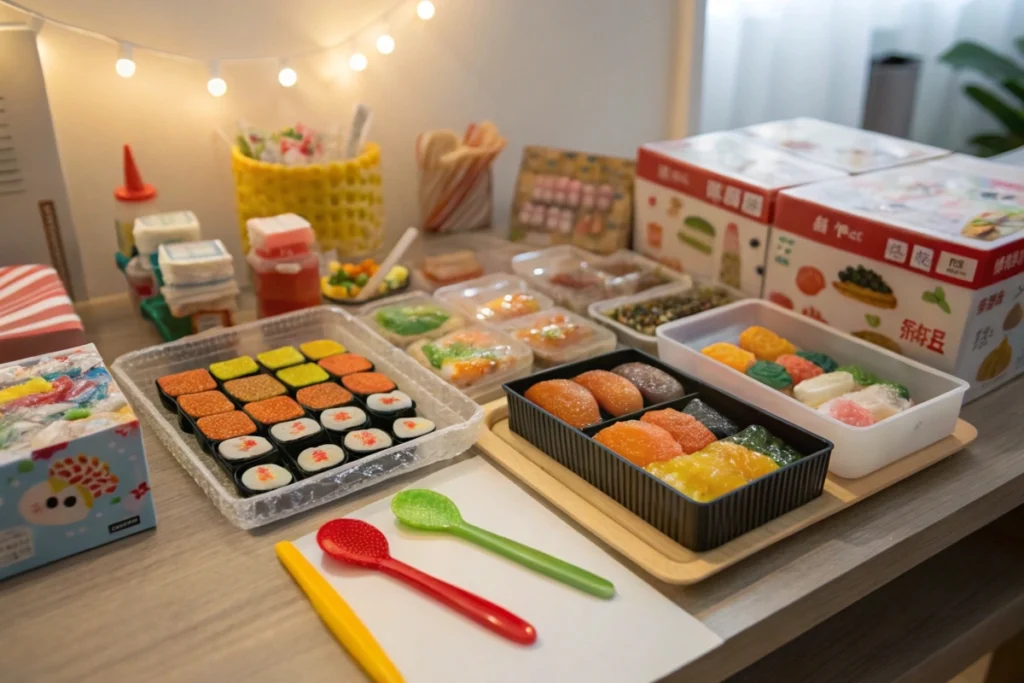
1. What Are eBay Japanese Fake Food Kits?
eBay japanese fake food kits come in multiple forms, with two primary categories standing out: candy craft kits and hyper-realistic plastic food displays. While many new enthusiasts assume they’re purely novelty items, these kits actually reflect a deeper Japanese tradition of sampuru (food replicas) and interactive candy-making (like Popin’ Cookin’ sets).
The Concept of Sampuru
In Japan, restaurants showcase plastic or wax food replicas in windows to attract customers and overcome language barriers. Over time, the craftsmanship behind these “fake foods” evolved into an art form. Artisans skillfully replicate dishes—ramen bowls, sushi platters—down to the last detail. While historically these were professional display items, smaller DIY kits now let hobbyists try their hand at molding or painting their own mini meals.
Candy Craft Kits
On eBay, you’ll find Popin’ Cookin’ or Kracie brand sets, which allow you to create edible, bite-sized versions of burgers, pizzas, or sushi using flavored powders and water. Though labeled “fake” because of their toylike appearance, they’re actually a sweet, candy-based alternative. Kids love them for their interactive, playful nature. Even adults appreciate the novelty factor and the chance to experiment with tiny molds and color-changing sauces.
Plastic Display Kits
Then there are the display-only items, featuring realistic faux noodles, desserts, or other iconic Japanese dishes. Some are partially assembled, requiring only paint or minor adjustments, while others let you start from scratch—using resin, silicone, or plastic materials. Enthusiasts collect these as home décor or conversation pieces, cherishing the attention to detail.
Why eBay?
eBay stands out as a global marketplace offering access to Japanese sellers, especially for vintage or niche kits no longer in mainstream production. It’s ideal for comparing prices, shipping options, and authenticity. Many smaller craft brands or secondhand kits appear here, making eBay a treasure trove if you know what to look for.
For a comprehensive approach to real Japanese cooking, you can also compare these “fake” items with actual recipes. For instance, see how real Japanese desserts differ by exploring traditional-japanese-desserts-recipe. The contrast between real mochi and a plastic or candy-based version offers a quirky insight into how these kits mirror Japan’s gastronomic world in miniature form.
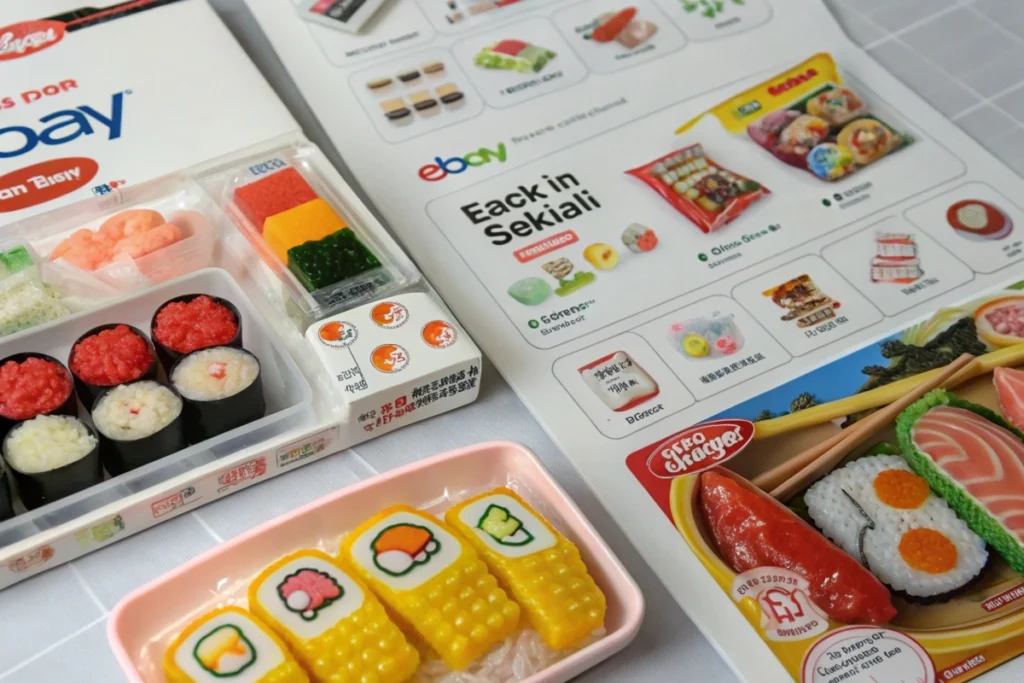
2. Types of Fake Food Kits: Candy, Display & More
When searching for ebay japanese fake food kits, you’ll quickly realize the range is broader than you might expect. From edible sweets to advanced resin-based displays, each type caters to different interests, skill levels, and budgets.
1. Edible Candy Kits
- Popin’ Cookin’: The most recognized brand in this category, offering sets that mimic burgers, sushi, or doughnuts. You mix flavored powders with water to create gummy-like foods. The result is more about novelty than gastronomic delight, but kids and curious adults adore the hands-on process.
- Heart or Meiji Kits: Other manufacturers produce similar sets, sometimes featuring chocolate decorating or bubble tea candy. Each set generally includes molds, powders, and illustrated instructions.
Who Should Try These?
If you enjoy quick, interactive projects or want to engage children in a safe, playful cooking simulation, candy kits are ideal. They don’t require advanced skills—just follow the mix-and-stir steps carefully.
2. Plastic Food Replica Kits
- DIY Sampuru: These sets include resin or plastic components to mold sushi, tempura, or fruit slices. Typically, you’ll shape or paint them to achieve lifelike textures. Advanced versions might come with miniature bowls, chopsticks, or stands for display.
- Collectible Miniatures: Certain kits revolve around gashapon or small “blind box” figurines shaped like ramen bowls or pastries. They’re less about construction and more about collecting.
Who Should Try These?
Crafters seeking a more artistic challenge will enjoy shaping or painting the replicas. Each kit can demand hours of detailed work. The final product can decorate a shelf, serve as photography props, or delight collectors looking for novelty gifts.
3. Hybrid Sets
Some sellers bundle candy kits with plastic model sets, or they combine partial candy items with small toy components—like mini tables or place mats. These “hybrid” offerings reflect the creativity of cross-brand collaborations.
4. Rarity & Limited Editions
Japan periodically releases limited-edition flavors or styles—for instance, seasonal candy kits featuring cherry blossom motifs. On eBay, these rare sets can fetch higher prices, especially if they’re out of production. If you’re a collector, setting eBay alerts for specific kits ensures you don’t miss out. Also, be mindful of shipping times and packaging to avoid damaged goods.
To maintain perspective, remember that these “fake” items aren’t only for show. By analyzing how they replicate actual dishes, you might gain deeper appreciation for real Japanese food prep. For instance, comparing a plastic sushi kit to actual technique can lead you to explore a japanese-chicken-fried-rice-recipe or other quick meals. Real or fake, both mediums highlight the detail-oriented spirit deeply ingrained in Japanese culinary culture.
3. How to Choose Quality Kits on eBay
Shopping for ebay japanese fake food kits can be exciting but also daunting, given the platform’s global listings and varying sellers. Below are pointers to help you identify quality products, ensure authenticity, and avoid common pitfalls.
1. Check Seller Ratings and Reviews
Look for sellers with high feedback scores (ideally above 98%) and consistent positive reviews about shipping reliability, product accuracy, and communication. Many reputable Japanese hobby shops or candy kit suppliers also operate on eBay, so a strong track record is essential.
2. Read Product Descriptions Carefully
- Language & Translation: Some listings use automatic translation from Japanese, leading to confusing details. Confirm the kit’s specifics—like whether it’s edible candy or purely for display.
- Components & Tools: Candy kits typically include powders, molds, and instructions. Plastic replica kits might have silicone molds, resin, paint, or miniature tableware. If any part is missing, you may need to improvise.
3. Look for Genuine Brands
Famous candy kit brands—like Kracie’s Popin’ Cookin’ or Heart—have easily identifiable logos and packaging. Fake or knockoff sets might have poor printing, suspiciously low prices, or no brand name at all. For plastic replicas, check if the brand mentions “sampuru” or references known manufacturers. If in doubt, cross-reference packaging images with official websites.
4. Shipping Considerations
Given these items often originate in Japan or Asia, shipping times and costs vary. Some sellers offer economy mail that could take weeks; others expedite via EMS or DHL for quicker delivery. Also, confirm if the kit is perishable (candy) and whether there’s any concern about heat exposure during transit. In winter, it’s usually safer, but summer shipping might risk melting.
5. Return/Refund Policies
While typically small, these kits can still arrive damaged if not packed properly. Check if the seller accepts returns or refunds in such cases. If you’re ordering pricier display kits, ensure you have recourse if the item arrives chipped or incomplete.
For a “real food” perspective, once you unbox your kit, you might realize how detailed these “fake” candies or displays are—mirroring actual Japanese dishes. If it piques your culinary interest further, consider exploring a japanese-sweets-recipes resource to recreate real versions. That synergy underscores why eBay remains a top marketplace for bridging novelty crafts and genuine gastronomic fascination.

4. Crafting Tips & Project Ideas
Once your ebay japanese fake food kits arrive, the real fun begins. Whether you opted for candy-based sets or plastic display replicas, a few insider strategies can help you maximize the experience. Below are step-by-step ideas to spark creativity and ensure smooth crafting sessions.
Candy Kits: Making the Most of Edible Projects
- Prepare Your Workspace: Clear a section of your kitchen table. Gather water, scissors, and paper towels—these kits often require mixing powders in small molds.
- Follow Instructions Precisely: The measured water addition is crucial for candy consistency. Too much water and you’ll have runny dough; too little results in crumbly textures.
- Experiment with Designs: Candy sushi sets let you shape “rice” from gummy powders. Add personal flair by swirling food coloring or sculpting whimsical shapes.
- Take Pictures: Before devouring your miniature creations, snap photos for social media or personal scrapbooks. The ephemeral nature of edible crafts is part of the charm.
Plastic Replica Kits: Achieving Realism
- Test Resin Consistency: Many plastic or resin-based sets require mixing chemicals. Follow the recommended ratios and allow sufficient curing time.
- Use Fine Brushes for Painting: Once molded, painting fine details—like fish roe or noodle texture—demands precision. Invest in small craft brushes to avoid clumsy strokes.
- Customize Your Display: Some crafters mount their finished items in shadow boxes or miniature restaurant scenes. For advanced projects, glue the replicas onto decorative plates or tiny bento boxes, creating a diorama effect.
Storage & Display Tips
- Edible Candy: If you have leftover powder or partially formed candy, store it in airtight containers. Usually, these products are best used shortly after opening.
- Plastic Items: Keep them dust-free by sealing them in a glass or clear acrylic container. If sunlight exposure is an issue, select a shaded spot to prevent color fading.
Themed Craft Gatherings
Organize a crafting night with friends or family. Each person can choose a kit—some might do candy, others plastic. The group can share tips, exchange spare parts, or even compete on who crafts the most realistic roll of sushi. For additional real-world cooking parallels, check out a japanese-shrimp-recipes guide—sometimes creating a “real vs. fake” challenge can elevate the fun.
In short, success with these kits requires a willingness to follow instructions closely, plus a dash of creative flair. The end result—be it a sweetly gummy hamburger or a hyper-realistic bowl of ramen—offers a tangible piece of Japanese-inspired artistry you can share or display.
5. Collecting & Displaying Fake Food: A Growing Trend
Beyond the immediate thrill of assembling ebay japanese fake food kits, many enthusiasts find these items worth collecting or displaying. Some gather entire shelves of candy kit boxes (unopened, for the packaging art), while others meticulously craft resin sushi to adorn their living room. Let’s explore why fake food collecting is on the rise and how you can exhibit your creations.
The Appeal of Collecting
- Cultural Curiosity: Fake food showcases Japan’s sampuru tradition, an art form recognized for extraordinary realism. Collectors often see it as owning a piece of culinary craftsmanship.
- Nostalgia & Novelty: For folks who grew up on Popin’ Cookin’, revisiting these kits taps into childhood memories. Or, for someone enthralled by the artistry of plastic replicas, each new kit adds excitement.
- Limited Editions: Some Japanese candy sets are seasonal or tie-ins with anime or special events. Sourcing them on eBay can feel like a treasure hunt, especially if you track down rare flavors or packaging.
Creative Display Ideas
- Glass Cabinets or Shelves: Perfect for showing off the realistic detail of your plastic sushi or noodles. Add small labels indicating the kit’s name or brand.
- Wall-Mounted Shadow Boxes: Ideal for miniatures or partial candy sets you want to preserve. The box keeps dust out while letting viewers appreciate the tiny details.
- Desk Accessories: Some crafters transform replicas into magnets, phone stands, or paperweights, offering daily glimpses of kawaii flair.
Incorporating Into Home Decor
Fake food displays can complement a modern or eclectic interior design. Position them in your kitchen or dining area for thematic synergy. If you’re hosting a Japanese-themed dinner, these replicas can also serve as conversation starters. For inspiration, see how real Japanese dishes can be visually mesmerizing by reading about a japanese-old-fashioned-recipe that merges classic cocktails with cultural flair.
Preservation and Maintenance
- Candy Kits: Once made, edible items won’t last long. Photograph them to immortalize their cuteness. If you want a longer-lasting piece, consider painting a protective sealant on non-edible components.
- Plastic Replicas: Wipe them occasionally with a soft cloth. Avoid direct sunlight or high humidity, which may degrade colors. Some advanced collectors even apply UV-protective sprays to keep them pristine.
Community & Swaps
Online forums or local hobby groups sometimes organize kit swaps, letting participants trade duplicates or partial sets. Engaging in these circles fosters deeper knowledge and helps you find limited releases or better deals.
From carefully curated glass displays to playful office desk ornaments, fake food kits provide a gateway to showcasing Japan’s culinary imagination. They bridge artistry and fun, ensuring that these novelty crafts continue to captivate hobbyists worldwide—long after the initial unboxing thrill fades.
History and Context of Japanese Fake Food Kits
The phenomenon of ebay japanese fake food kits doesn’t exist in a vacuum. Their origins trace back to Japan’s broader cultural and commercial practices around sampuru, or realistic food replicas. Over decades, these meticulously crafted items evolved from restaurant display props into an international hobby, culminating in interactive sets sold on eBay and beyond.
Sampuru’s Commercial Beginnings
In early 20th-century Japan, as Western-style restaurants took root, displaying actual dishes outside was impractical—food would spoil, and costs soared. Artisans started sculpting wax or resin replicas of noodles, tempura, or soup. These were placed in storefront windows to entice customers and help them visually understand the menu. The concept quickly spread nationwide, effectively bridging language barriers for tourists and clarifying portion sizes.
Advancements in Crafting Techniques
By mid-century, artisans refined their methods, moving from rudimentary wax molds to specialized plastics and silicone materials. Colors, textures, and gloss were meticulously adjusted so that a bowl of ramen glistened as if fresh. Over time, sampuru became an art form, with master crafters sometimes spending years perfecting the skill of shaping each noodle strand realistically.
Shift to Consumer-Driven Novelty
As tourism to Japan grew in the late 20th century, travelers discovered the charm of these replicas. Souvenir shops sold small versions—mini sushi keychains or fridge magnets—leading to a booming novelty market. Candy kit manufacturers, noticing the popularity of lifelike plastic, adapted the concept for playful, edible sets. Popin’ Cookin’ or Heart introduced simplified approaches to mini food craft, focusing on taste and fun rather than hyper-realistic detail.
Global Reach and eBay’s Role
The digital era brought these kits to a worldwide audience. Websites and hobby forums buzzed with praise for Japanese fake food’s whimsy. eBay emerged as a centralized marketplace, connecting overseas buyers with Japanese sellers. No longer limited to physical souvenir shops, enthusiasts could order specialized sets—ranging from advanced resin shrimp molds to limited-run candy kits—straight from Japan. The market expanded further when YouTube creators posted unboxing and tutorial videos, spurring viral interest.
Modern Renaissance
Today, eBay hosts thousands of listings for such kits, from brand-new candy sets to vintage plastic samples. Some are collectible relics from defunct manufacturers; others represent contemporary expansions of Popin’ Cookin’ lines. Collaboration with anime or pop-culture brands also keeps the category fresh. Meanwhile, real restaurants still rely on large-scale, custom sampuru to decorate windows, preserving the craft’s commercial roots.
This backstory clarifies how a niche trade for professional use morphed into a global hobby. By blending artistry, culinary culture, and a dash of fun, Japanese fake food kits have secured an enduring place in the hearts of collectors, crafters, and culinary explorers alike.

Practical Examples & Use Cases
Scenario 1: Family Weekend Activity
A parent buys a Popin’ Cookin’ sushi kit from eBay. On Saturday afternoon, they gather the kids around the kitchen table to create tiny, gummy “salmon” slices and molded rice. Each child happily stirs the colorful powders and water in mini trays, proud of their almost-too-cute-to-eat results. This experience blends creativity, cultural exposure, and lighthearted fun. Later, they discuss how real sushi differs—sparked by a recipe from japanese-fish-recipes.
Scenario 2: Resin Craft Hobbyist
A dedicated crafter stumbles upon a “make your own ramen display” kit. It includes resin noodles, a miniature bowl, and paint to replicate broiled pork slices. Over a few evenings, the hobbyist meticulously sculpts each swirl of “broth,” layering color gradients to mimic real soup. The finished piece becomes a conversation starter, displayed in a glass cabinet among other Japanese-themed collectibles.
Scenario 3: Office Desk Decor
A young professional wants to personalize their workspace. They order a set of plastic dessert miniatures from eBay, featuring strawberry parfaits and chocolate sundaes. After assembly, they glue magnets on the back of each miniature, turning them into fridge or cubicle décor. Colleagues stop by to ask about the adorable faux treats, generating lighthearted discussions about Japanese pop culture.
Scenario 4: Live-Streaming Unboxing
A content creator on Twitch or YouTube hosts a “Japanese Fake Food Kit Unboxing.” They open multiple sets on camera—some candy-based, others purely decorative. Viewers watch as the streamer attempts the instructions (sometimes leading to comedic mishaps) and rates each kit for difficulty and final appearance. Audience members then flock to eBay listings, spurred by curiosity over these whimsical crafts.
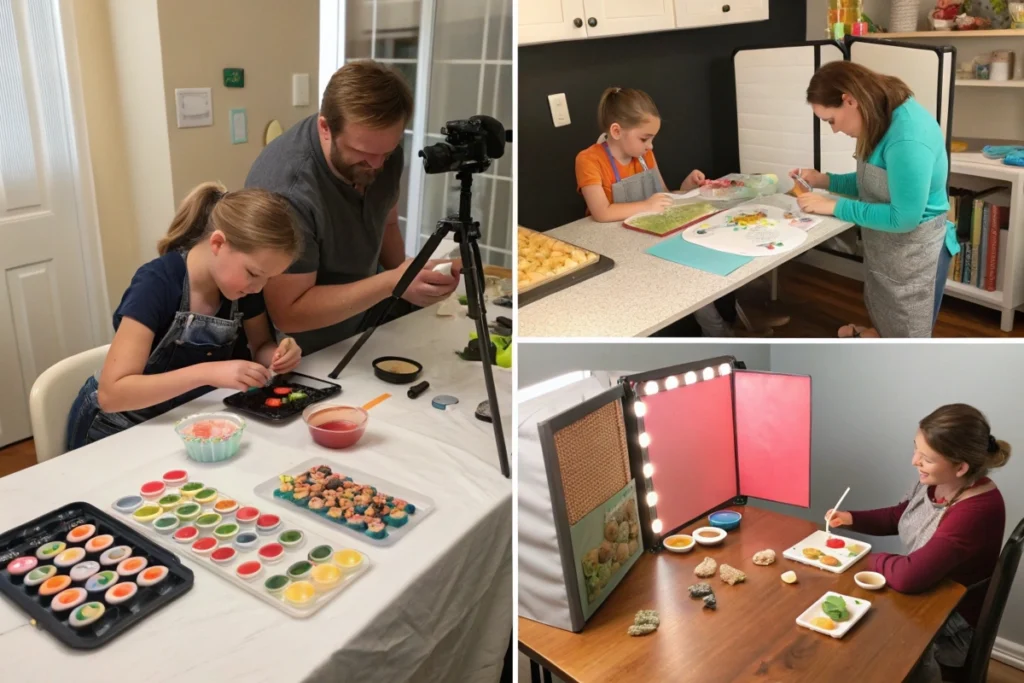
FAQs
1. Are ebay japanese fake food kits safe to eat if they’re candy-based?
Yes. Brands like Popin’ Cookin’ use food-grade ingredients that meet Japan’s stringent safety standards. Always check expiration dates, and ensure the packaging is sealed. If you’re buying vintage or secondhand, confirm it’s unopened and within the “best by” range.
2. How complicated are these kits?
Edible sets typically require just water, small molds, and minimal mixing. They’re designed for all ages, though younger kids may need adult supervision. Replica kits using resin or silicone are more involved—some demand precise measuring or painting.
3. What if the product arrives damaged or incomplete?
On eBay, choose sellers with strong ratings and read reviews carefully. If an item comes broken, contact the seller. Many offer refunds or replacements under eBay’s buyer protection. Make sure to review shipping methods, especially for delicate plastic parts.
4. Can I freeze or preserve candy-based creations?
Candy kits are best enjoyed fresh. Freezing might alter texture or cause humidity-related issues when thawed. If you want a permanent keepsake, consider painting a layer of clear resin or varnish, but note this makes them inedible.
5. How do I know if a kit is authentic?
Look for recognized brand logos (Kracie, Heart, etc.) or official markings. Check photos for consistent packaging colors and designs. If the listing’s price is suspiciously low, it might be a knockoff. Be wary of listings lacking brand details.
6. Are these kits only for kids?
Not necessarily. Many adults collect or build them for fun, décor, or stress relief. Candy kits often target kids, but the advanced resin sets can appeal to serious crafters. Some hobbyists even combine them with real cooking by exploring a japanese-vegetables-recipe to appreciate the real dish behind the model.
7. Do I need Japanese language skills?
Most candy kits include pictorial instructions. Replica model kits might rely on visual diagrams, though text can be in Japanese. Online videos or community forums often supply translations or step-by-step demos for clarity.
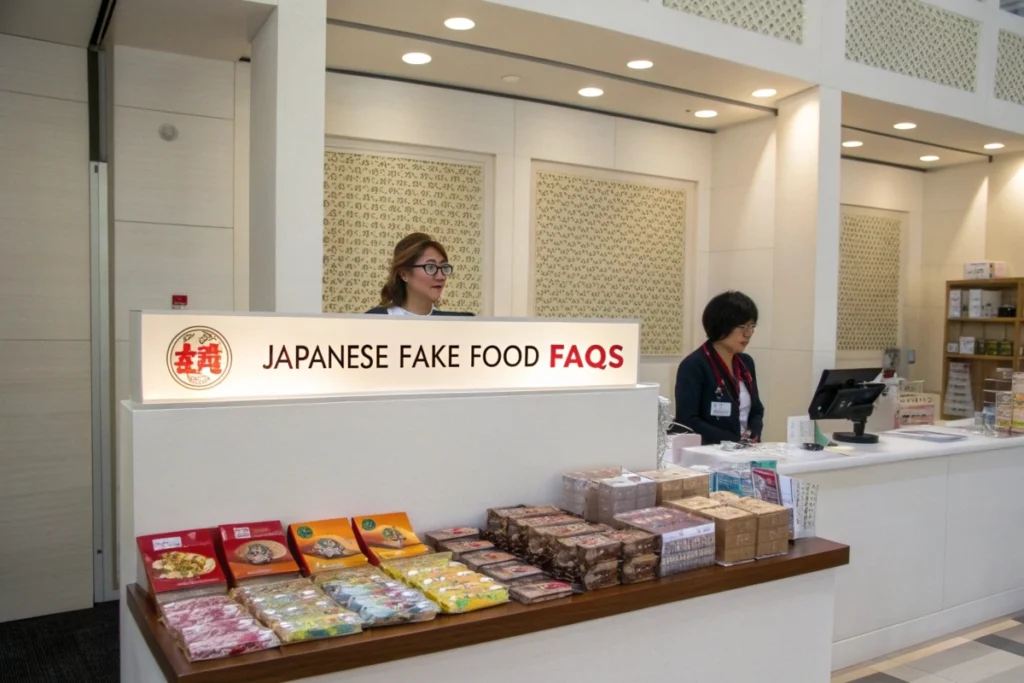
Conclusion
eBay japanese fake food kits merge creativity, cultural curiosity, and a dash of whimsy—proving there’s more to “fake food” than meets the eye. From candy-based sets that let you craft miniature burgers or sushi from sweet powders to meticulously sculpted plastic replicas of iconic Japanese dishes, these kits captivate collectors, families, and hobbyists worldwide. By exploring the variety on eBay, you unlock access to limited editions, unique brand collaborations, and the convenience of comparing multiple listings in one marketplace.
Beyond the fun factor, these kits hint at Japan’s longstanding sampuru tradition, where realism meets artistry in window displays and store shelves. Whether you’re enticed by the sugary charm of Popin’ Cookin’ or the lifelike detail of resin-based ramen bowls, each purchase can deepen your appreciation for Japanese culture. If you crave an extra challenge, compare these “fake” items with real cooking by checking out resources like japanese-sweets-recipes or other dishes to see how authenticity translates from plate to plastic.
Ultimately, your approach might be playful, decorative, or collector-focused. No matter which path you choose, diving into the world of Japanese fake food kits can spark creativity and global culinary awareness, all while offering a truly distinctive pastime.
